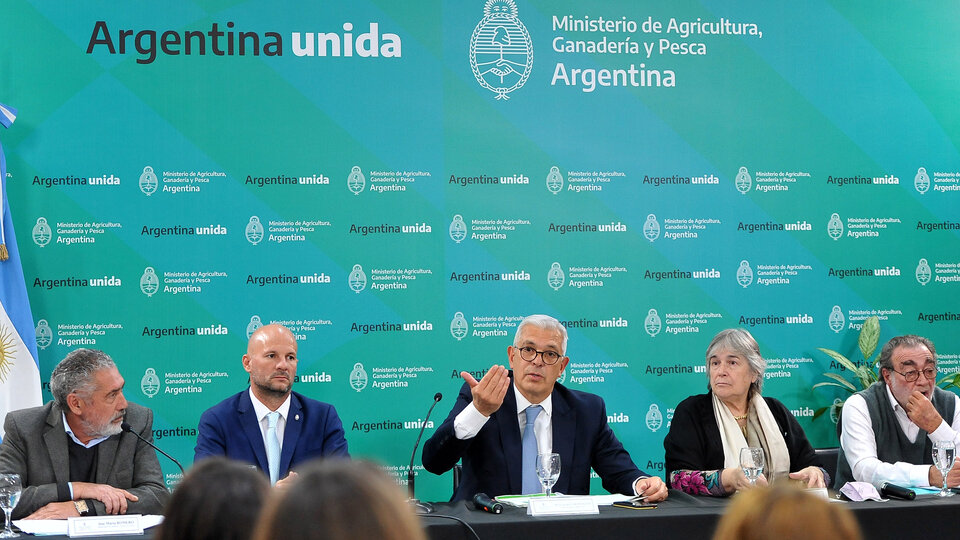The Ministry of Agriculture, Livestock and Fisheries launched an ambitious livestock reconversion plan to increase beef production by 600,000 tons per year between now and 2030. The two key points of the planned production growth strategy are the increase of the calving rate of calves per female animal and the increase in the weight of the animal at the time of its shipment to slaughter. The program contemplates the allocation of a sum of 100 billion pesos in subsidized credits for production and the refrigeration industry, both for working capital and for equipment.
At the industrial level, the aim is to adapt the system for marketing half-carcasses for the domestic market, replacing it with chopping for distribution to retail. And also to the incorporation of traceability and typification tools in each slaughterhouse, to improve the qualification of the meat with a view to international trade.
“In Argentina there are 234,000 livestock producers, most of them small and medium-sized, and some 380 establishments or slaughter plants; this plan is intended for all of them, which aspires, in the medium term, to increase the supply of meat,” said Julián Dominguez , minister of the area, during the press conference to present the Plan.Ar program. In a first stage, this year, the objective of reconversion of all slaughter plants must be met so that they are able to distribute beef to the trade, in pieces of no more than 32 kilograms, replacing the classic half beef. The deadline for its implementation is November of this year. “We will be very strict in its compliance,” said the minister.
Part of the amount of credits assigned to the plan will be directed to this segment, the industrial one, to facilitate the implementation of the cutting. “There are already more than 220 establishments, more than half of the existing ones, that have presented a reconversion plan,” said Jorge Ruiz, one of the officials who accompanies Domínguez in the management.
“The objective of the plan is to increase meat production in a sustainable way. But there is no single plan to achieve it, because there is not a single livestock model in the entire country, that is why we are going to work with each province, with technicians and faculties of each place, to see what is the best way to achieve the results,” Dominguez said.
“We have a population that grows by 500,000 people per year and a stable cattle stock. We necessarily have to increase the volume of production to accompany this increase in population and consumers,” he said. “But we already warned about this situation a decade ago, when I was a minister in the government of Cristina Fernández de Kirchner, and then we raised the need to diversify meat consumption. That is why we are simultaneously launching a plan to transform the industry poultry to meet this increased demand, and we are also working with pork and sheep meat to be able to increase our production capacity”.
Faced with a query from the press regarding possible discrepancies with the plan on the part of the export sector, the minister reacted by rejecting those arguments. “We are going to export everything that our productive capacity allows us to export. As a Peronist minister, what I want is for people to consume meat. But to export, I need to have more and better livestock, and to achieve that, the producer must have greater productive capacity.” There is no problem of restrictions on exports, let’s rule out that which is an argument of the exporting refrigerators to obtain a larger quota,” he warned.
Dominguez later added that “every time the closure of exports was argued to scare producers, it was to lower the price of the farm. For this ministry, the central thing is the producer, that is why we make a plan to increase the production capacity. Nor are we going to accept that they put international conditions on our way of producing. You will always find me defending the way of producing in Argentina. And, furthermore, we are exporting 800,000 tons per year, with which those arguments have no reason to be”.
“The goal we set for ourselves, which is not immediate, is to increase meat production by 600,000 tons with the same livestock stock,” Domínguez said during a press conference in which he was accompanied by the Secretary of Agriculture, Livestock and Fisheries, Matías Lestani, and the president of the National Service for Food Safety and Quality (Senasa), Diana Guillén. The undersecretary of Livestock, José María Romero, also participated; and the chief of staff of the portfolio, Jorge Ruiz.
The minister maintained that “this is a living plan where there is a coincidence in the purposes and in the goals to be achieved, but the dynamics of the intervention strategy in each province will be given by the districts themselves with the entities.” “In Argentina there are different levels of productivity and what the program foresees, through the intervention of INTA, Senasa and the entities, is to reach all producers with assistance to increase productivity.”
At the press conference, Secretary Lestani stated that “if we maintained the consumption rates that we had until 2015, by 2032 we would not have an exportable balance under current conditions. It is essential to improve these production ratios. It is a demand from the entire chain “.
–


